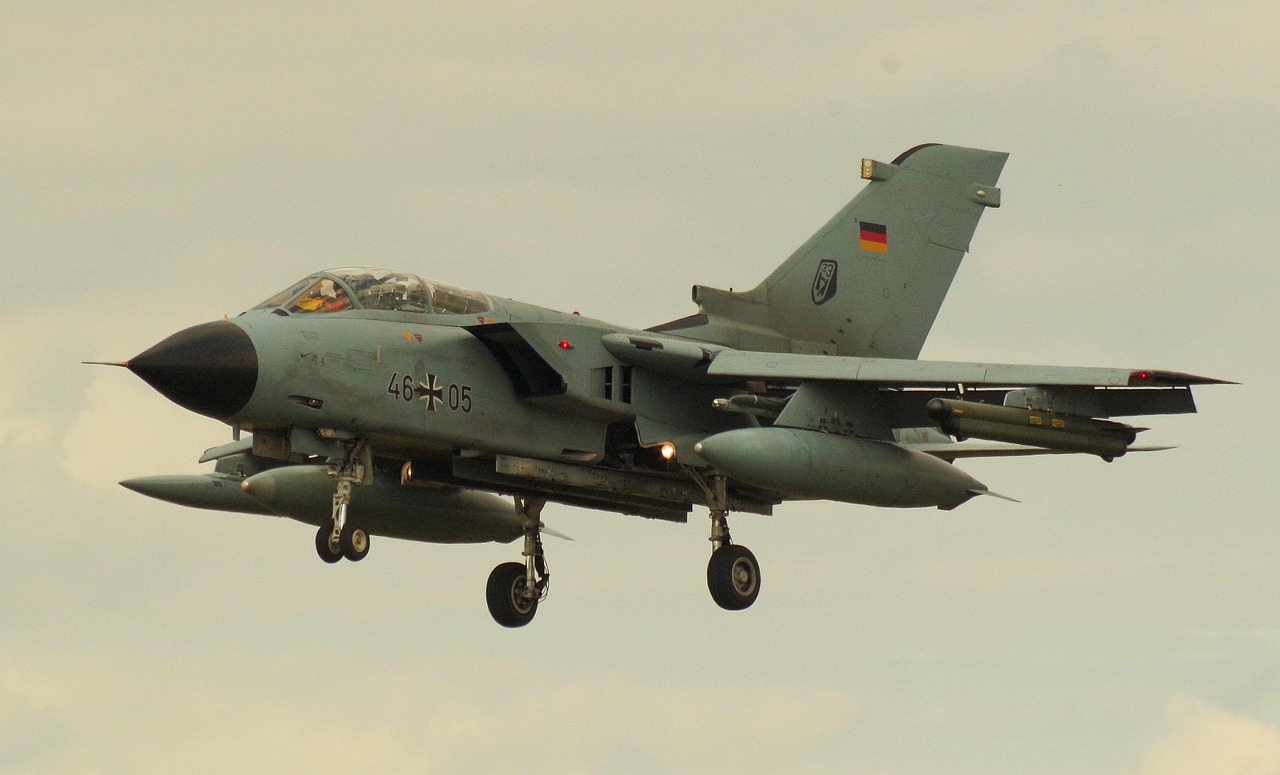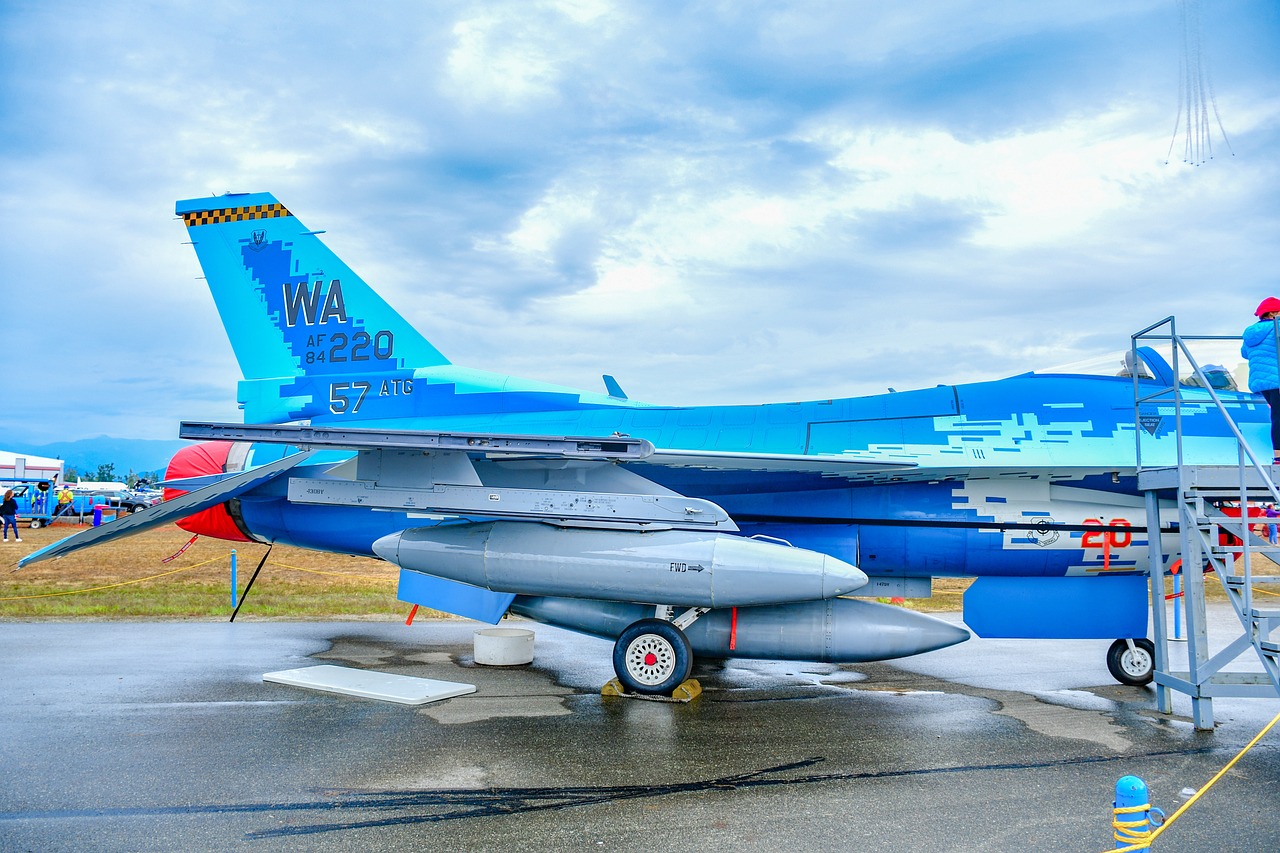How AI is Transforming Military Cyber Defense Systems
The digital battlefield is evolving at an unprecedented pace, and at the heart of this transformation is artificial intelligence (AI). In military cyber defense, AI is not just a tool; it’s a game-changer. Imagine a world where military systems can predict, detect, and neutralize cyber threats before they even manifest. This is not science fiction; it’s happening now. As cyber threats become more sophisticated, the need for advanced defense mechanisms is more critical than ever. AI is stepping in to fill this gap, revolutionizing how military organizations approach cybersecurity.
One of the most significant impacts of AI in military cyber defense is its ability to enhance threat detection. Traditional methods often struggle to keep pace with the sheer volume and complexity of cyber threats. However, AI-driven systems can analyze vast amounts of data in real-time, identifying potential threats with remarkable accuracy. This capability allows military forces to maintain a robust security posture, adapting quickly to the ever-changing landscape of cyber warfare.
AI enhances cybersecurity by automating threat detection and response, providing military systems with the ability to analyze vast amounts of data in real-time, thereby improving overall security posture against evolving cyber threats. With the integration of AI, military organizations can not only react to incidents but also anticipate them. This proactive approach is crucial in a world where cyber adversaries are constantly developing new tactics and strategies.
Advanced algorithms enable military cyber defense systems to identify and neutralize threats more effectively. By leveraging machine learning, these systems can adapt to new attack patterns, ensuring robust protection against sophisticated cyber adversaries. Imagine a security system that learns from each attempted breach, becoming smarter and more resilient over time. This is the power of AI-driven threat detection, which significantly enhances the military’s ability to fend off cyber attacks.
Machine learning algorithms play a crucial role in analyzing network traffic and identifying anomalies. These algorithms continuously learn from new data, improving their accuracy and efficiency in detecting potential cyber threats. For instance, if a particular pattern of behavior is recognized as benign, the system can flag any deviations from this norm as potential threats. This capability not only speeds up detection but also reduces the number of false positives, allowing military personnel to focus on genuine threats.
Behavioral analysis focuses on understanding user behavior patterns to identify deviations that may indicate a security breach. This proactive approach helps military organizations respond swiftly to potential threats. By monitoring user actions and detecting anomalies, military cyber defense systems can isolate and address issues before they escalate into significant breaches.
Anomaly detection techniques utilize statistical methods to identify unusual patterns in data. These techniques are essential for early threat detection and can significantly reduce response times in military cyber defense. For example, if a user suddenly accesses data they typically don’t interact with, the system can alert security teams to investigate further. This early warning system is crucial for maintaining operational integrity.
AI facilitates automated incident response processes, allowing military cyber defense systems to react promptly to threats. This automation minimizes human error and accelerates the mitigation of cyber incidents. Imagine a scenario where a cyber attack is detected, and the system automatically initiates countermeasures without waiting for human intervention. This rapid response can be the difference between a contained incident and a full-blown crisis.
AI supports military leaders in making informed decisions by providing data-driven insights. Advanced analytics tools help assess risks and prioritize responses, ultimately strengthening the overall cyber defense strategy. In a landscape where every second counts, having the right information at the right time can significantly enhance decision-making processes.
Data analytics tools process and analyze large datasets, enabling military organizations to gain actionable insights. This capability enhances situational awareness and informs strategic decision-making in cyber defense operations. By visualizing data trends and patterns, military leaders can make informed choices about resource allocation and threat prioritization.
Predictive analytics uses historical data to forecast potential cyber threats, allowing military units to prepare and strengthen defenses proactively. This forward-thinking approach is vital for staying ahead of cyber adversaries. By anticipating threats before they occur, military organizations can implement preventive measures that significantly reduce risk.
The integration of AI in military cyber defense is expected to evolve, with advancements in technology leading to more sophisticated defense mechanisms. Future developments will focus on enhancing resilience and adaptability against emerging cyber threats. As AI technology continues to improve, we can expect military cyber defense systems to become even more autonomous and capable of handling complex cyber environments.
- What is the primary role of AI in military cyber defense?
AI enhances threat detection, automates incident response, and supports decision-making through data analytics. - How does machine learning improve cybersecurity?
Machine learning algorithms continuously learn from new data, improving their ability to detect anomalies and threats. - What are the benefits of automated incident response?
Automation minimizes human error, accelerates response times, and allows for immediate countermeasures against threats. - How can predictive analytics help in cyber defense?
Predictive analytics forecasts potential threats, enabling military units to prepare and strengthen defenses proactively.

The Role of AI in Cybersecurity
In today’s digital landscape, the importance of cybersecurity cannot be overstated, especially for military operations that rely heavily on technology. With the rise of sophisticated cyber threats, traditional defense mechanisms often fall short. This is where artificial intelligence (AI) steps in to revolutionize the way military organizations protect their sensitive information and infrastructure. AI enhances cybersecurity by automating threat detection and response, providing military systems with the ability to analyze vast amounts of data in real-time. This capability is crucial for improving overall security posture against evolving cyber threats.
Imagine trying to find a needle in a haystack. Now, imagine having a smart robot that not only finds the needle but also ensures it never gets lost again. That’s the essence of AI in cybersecurity. By utilizing advanced algorithms, military cyber defense systems can identify potential threats much faster than human analysts. This rapid response is essential in a world where cyber adversaries are constantly developing new tactics and techniques. AI's ability to process and analyze data at lightning speed allows military organizations to stay one step ahead of potential attacks.
Moreover, AI’s role extends beyond just detection. It also plays a significant part in incident response. When a cyber event occurs, time is of the essence. AI can automate the response processes, enabling systems to react promptly to threats, thus minimizing damage and downtime. This automation not only reduces the risk of human error but also allows military personnel to focus on more strategic tasks rather than getting bogged down by routine responses.
To illustrate the impact of AI on military cybersecurity, consider the following benefits:
- Real-time Analysis: AI can analyze incoming data streams in real-time, identifying threats as they emerge.
- Adaptive Learning: Machine learning algorithms can adapt to new attack patterns, continually improving their detection capabilities.
- Reduced Response Time: Automated systems can react to threats faster than a human operator, significantly decreasing the time to mitigate incidents.
As military organizations increasingly adopt AI technologies, the landscape of cybersecurity is evolving rapidly. The integration of AI not only enhances the effectiveness of current defense systems but also paves the way for innovative strategies that can adapt to the ever-changing cyber environment. This transformative approach is essential for maintaining national security in an age where cyber warfare is becoming more prevalent.
In conclusion, the role of AI in cybersecurity is pivotal, especially for military applications. With its ability to automate processes, analyze vast amounts of data, and adapt to new threats, AI is revolutionizing how military organizations protect their assets. As we look to the future, it is clear that AI will continue to play an integral role in shaping the strategies and technologies used in military cyber defense.
- How does AI improve threat detection?
AI improves threat detection by utilizing machine learning algorithms that analyze network traffic and identify anomalies in real-time, allowing for quicker identification of potential cyber threats. - What are the benefits of automated incident response?
Automated incident response minimizes human error, accelerates the reaction to threats, and allows military personnel to focus on strategic decision-making rather than routine responses. - Can AI predict future cyber threats?
Yes, AI can use predictive analytics to forecast potential cyber threats based on historical data, enabling military units to prepare and strengthen their defenses proactively.

AI-Driven Threat Detection
In the ever-evolving landscape of cyber warfare, the need for effective defense mechanisms has never been more critical. is revolutionizing the way military organizations protect their sensitive data and infrastructure. By utilizing advanced algorithms, these systems are not just reacting to threats; they are proactively identifying and neutralizing them before they can cause harm. Imagine having a security guard who not only watches for intruders but also predicts their moves based on previous patterns. That's the essence of AI in threat detection.
One of the standout features of AI-driven systems is their ability to leverage machine learning. These systems are designed to continuously learn from the vast amounts of data they process, adapting to new attack vectors as they emerge. For instance, if a particular type of cyber attack is detected, the system can analyze it, learn from it, and then enhance its defenses against similar attacks in the future. This adaptability is crucial in a world where cyber threats are becoming increasingly sophisticated.
To illustrate the effectiveness of AI in threat detection, let’s consider the role of behavioral analysis. This technique involves monitoring user behavior to establish a baseline of normal activity. When deviations from this baseline occur, such as an employee accessing sensitive data at odd hours, the system flags this as a potential security breach. By focusing on behavior rather than just static rules, military cyber defense can respond more swiftly and accurately to genuine threats.
Moreover, anomaly detection techniques are an integral part of AI-driven threat detection. These techniques utilize statistical methods to sift through data and identify unusual patterns that may indicate an attack. For example, if there’s a sudden spike in data traffic from a normally quiet server, this anomaly could trigger an alert for further investigation. The ability to detect such anomalies in real-time is vital for minimizing the response time during a cyber incident.
In summary, AI-driven threat detection is not just about identifying threats; it's about creating a dynamic defense system that evolves with the threat landscape. The combination of machine learning, behavioral analysis, and anomaly detection creates a robust framework that enhances military cybersecurity. As we move forward, the integration of these technologies will only become more sophisticated, allowing military organizations to stay one step ahead of cyber adversaries.
- What is AI-driven threat detection?
AI-driven threat detection refers to the use of artificial intelligence technologies to identify and respond to cyber threats more effectively and efficiently. - How does machine learning enhance cybersecurity?
Machine learning enhances cybersecurity by enabling systems to learn from past data, adapt to new threats, and improve detection accuracy over time. - What role does behavioral analysis play in threat detection?
Behavioral analysis helps in identifying unusual patterns in user behavior, allowing for quicker responses to potential security breaches. - Why are anomaly detection techniques important?
Anomaly detection techniques are crucial for spotting unusual activities that could indicate a cyber attack, thus facilitating early intervention.

Machine Learning Algorithms
In the realm of military cyber defense, are nothing short of a game changer. These algorithms are designed to analyze vast amounts of network data, identifying patterns and anomalies that would be nearly impossible for human analysts to detect in real-time. Imagine a skilled detective sifting through mountains of evidence, piecing together clues to solve a case. Now, picture that detective enhanced with superhuman abilities—this is what machine learning brings to the table.
The core strength of these algorithms lies in their ability to learn from data. They continuously adapt and evolve, improving their detection capabilities as they are exposed to new types of cyber threats. This is crucial in a battlefield where adversaries are constantly developing more sophisticated attack methods. For instance, if a new type of malware emerges, machine learning algorithms can analyze its behavior, learn its signature, and adjust their detection parameters to ensure that future attacks are thwarted.
One of the key components of machine learning in this context is supervised learning, where algorithms are trained on labeled datasets. This means that they learn from examples of known threats and benign activities, allowing them to distinguish between normal and suspicious behavior. Additionally, unsupervised learning plays a vital role, as it enables the algorithms to identify patterns without pre-existing labels, which is essential for detecting zero-day vulnerabilities—those sneaky threats that have never been seen before.
To illustrate the effectiveness of machine learning algorithms in cyber defense, consider the following table that highlights some of the most impactful applications:
| Application | Description |
|---|---|
| Intrusion Detection Systems (IDS) | Utilizes machine learning to monitor network traffic and identify potential intrusions based on learned patterns. |
| Phishing Detection | Employs algorithms to analyze email content and URLs, flagging suspicious communications before they reach users. |
| Malware Classification | Classifies malware based on behavior, allowing for quick identification and response to new threats. |
As military organizations continue to harness the power of machine learning, they are not only enhancing their defensive capabilities but also fostering a culture of innovation. This proactive approach to cybersecurity ensures that they remain one step ahead of potential threats. In a world where cyber warfare is becoming increasingly prevalent, the integration of machine learning algorithms into military cyber defense systems is not just advantageous; it is essential for maintaining national security.
- What are machine learning algorithms?
Machine learning algorithms are computational methods that enable systems to learn from data, identify patterns, and make decisions with minimal human intervention.
- How do machine learning algorithms improve cybersecurity?
They enhance cybersecurity by automating threat detection, adapting to new attack patterns, and significantly reducing response times.
- What types of learning are used in machine learning?
Machine learning typically involves supervised learning, where algorithms learn from labeled data, and unsupervised learning, where they identify patterns without prior labels.

Behavioral Analysis
Behavioral analysis is a cutting-edge approach that focuses on understanding and interpreting user behavior patterns within military cyber defense systems. Imagine a security guard who not only watches the entrance but also knows the usual routines of everyone who enters and leaves. This is similar to how behavioral analysis works in cybersecurity. By establishing a baseline of normal behavior, military systems can pinpoint any deviations that may signal a potential security breach.
The essence of behavioral analysis lies in its proactive nature. Instead of merely reacting to threats after they occur, this method anticipates unusual activities that could indicate malicious intent. For instance, if a user who typically logs in during office hours suddenly accesses sensitive data at midnight, this anomaly raises a red flag. Such insights enable military organizations to act swiftly, potentially thwarting a cyber attack before it escalates.
Moreover, behavioral analysis is not a one-size-fits-all solution. It tailors its approach based on various factors, including:
- User Roles: Different users have different access levels and behaviors. Understanding these nuances is crucial in identifying potential threats.
- Historical Data: By analyzing past behavior, systems can better predict future actions and identify anomalies more effectively.
- Environmental Changes: Changes in the operational environment, such as new software or changes in team structure, can influence user behavior and should be monitored closely.
In addition to identifying threats, behavioral analysis can enhance the overall security framework by providing insights into how users interact with military systems. This information can be invaluable for training personnel and refining security protocols. For example, if certain patterns of behavior frequently lead to security breaches, military organizations can implement targeted training to address these issues.
Furthermore, the integration of artificial intelligence with behavioral analysis takes this concept to the next level. AI algorithms can process vast amounts of behavioral data in real-time, learning from each interaction and continuously refining their understanding of what constitutes normal behavior. This dynamic learning capability means that as cyber threats evolve, so too does the military's ability to defend against them.
In summary, behavioral analysis offers a robust framework for enhancing military cyber defense systems. By focusing on user behavior patterns and leveraging AI, military organizations can proactively identify and mitigate potential threats, ensuring a stronger defense against the ever-evolving landscape of cyber warfare.
Q1: What is behavioral analysis in military cybersecurity?
A1: Behavioral analysis in military cybersecurity involves monitoring and interpreting user behavior patterns to identify deviations that may indicate a security breach. It helps organizations proactively respond to potential threats.
Q2: How does AI enhance behavioral analysis?
A2: AI enhances behavioral analysis by processing large datasets in real-time, learning from user interactions, and continuously refining its understanding of normal behavior, making it more effective at detecting anomalies.
Q3: Why is behavioral analysis important for military organizations?
A3: Behavioral analysis is crucial for military organizations as it allows for proactive threat detection, improves situational awareness, and enhances overall security protocols, ultimately safeguarding sensitive information and operations.

Anomaly Detection Techniques
In the ever-evolving landscape of military cyber defense, serve as a critical line of defense against potential threats. These techniques are designed to identify patterns in data that deviate from the norm, allowing for the early detection of suspicious activities that could indicate a security breach. Imagine a seasoned security guard who knows every detail of their post: the usual foot traffic, the typical sounds, and even the familiar faces. When something unusual occurs—like a sudden spike in activity or an unfamiliar presence—the guard's instinct kicks in, prompting them to investigate further. Similarly, anomaly detection systems are programmed to recognize what “normal” looks like, so they can alert military personnel when something is amiss.
At the core of these techniques lies the use of statistical methods and machine learning algorithms. By analyzing historical data, these systems can establish a baseline of expected behavior. Once this baseline is set, any significant deviations can trigger alerts, prompting a closer examination of the situation. For instance, if a military network typically sees a steady flow of data during office hours but suddenly experiences an unusual surge in traffic late at night, the anomaly detection system will flag this as a potential threat.
There are several types of anomaly detection techniques that military cyber defense systems can employ, including:
- Statistical Analysis: This method involves using statistical models to identify data points that fall outside of expected ranges. By applying techniques such as z-scores or standard deviations, systems can quantify how extreme a particular observation is compared to the norm.
- Machine Learning Approaches: Algorithms like clustering and classification can be used to group similar data points and identify outliers. For example, clustering algorithms can help in segmenting typical user behavior, making it easier to spot anomalies.
- Time-Series Analysis: This technique focuses on data points collected over time, allowing systems to detect trends and seasonal patterns. Anomalies can be identified when current data diverges significantly from historical trends.
Implementing these techniques not only enhances the speed and accuracy of threat detection but also significantly reduces the response time to potential incidents. By catching anomalies early, military organizations can take swift action to mitigate risks before they escalate into more serious breaches. Moreover, these systems are continuously learning from new data, which means their efficacy improves over time, adapting to new methods of cyber attacks.
In summary, anomaly detection techniques are a vital part of military cyber defense strategies, providing a proactive approach to identifying threats. As technology advances and cyber adversaries become more sophisticated, the importance of these techniques will only grow, ensuring that military networks remain secure and resilient against potential attacks.
- What is anomaly detection? Anomaly detection refers to the identification of unusual patterns in data that do not conform to expected behavior, often indicating potential security threats.
- How does anomaly detection work? Anomaly detection systems establish a baseline of normal behavior using historical data, and any significant deviations from this baseline trigger alerts for further investigation.
- Why is anomaly detection important in military cyber defense? It allows for early detection of potential threats, enabling military organizations to respond swiftly and effectively, thereby minimizing the risk of breaches.

Automated Incident Response
In the fast-paced world of military cyber defense, speed is of the essence. Cyber threats can emerge in the blink of an eye, and the ability to respond promptly can mean the difference between a minor incident and a full-blown crisis. This is where systems come into play, revolutionizing how military organizations handle cyber threats. By leveraging the power of artificial intelligence, these systems can react to incidents much faster than human operators ever could.
Imagine a scenario where a cyber attack is detected. In traditional setups, a human operator would need to sift through alerts, analyze the situation, and then decide on a course of action. This process can take valuable time, during which the threat may escalate. systems eliminate this lag by utilizing pre-defined protocols and machine learning algorithms to instantly assess the severity of an incident and initiate appropriate countermeasures.
For instance, when an anomaly is detected, the system can automatically isolate affected systems, block malicious traffic, and even initiate remediation processes—all without human intervention. This automation not only reduces the risk of human error but also ensures that responses are consistent and based on the best available data. The result? A more resilient and responsive military cyber defense posture.
Furthermore, these automated systems are designed to learn from each incident. They analyze the outcomes of their responses, refining their algorithms to improve future reactions. This continuous learning loop is essential for adapting to the ever-evolving landscape of cyber threats.
To illustrate the effectiveness of automated incident response, consider the following table that outlines key benefits:
| Benefit | Description |
|---|---|
| Speed | Immediate response to threats, reducing the window of vulnerability. |
| Consistency | Standardized responses ensure that protocols are followed every time. |
| Scalability | Can handle multiple incidents simultaneously, something human teams struggle with. |
| Learning | Improves response strategies based on historical data and outcomes. |
As military cyber defense strategies continue to evolve, the role of will only grow in importance. By embracing these technologies, military organizations can not only enhance their defensive capabilities but also ensure they remain one step ahead of cyber adversaries. The future of military cybersecurity is not just about fighting fires; it's about preventing them before they start.
- What is automated incident response?
Automated incident response refers to the use of technology, particularly AI, to automatically detect and respond to cyber threats without human intervention. - How does automated incident response improve military cybersecurity?
It enhances speed, consistency, and scalability in responding to incidents, thereby minimizing potential damage from cyber attacks. - Can automated systems learn from past incidents?
Yes, automated incident response systems utilize machine learning to analyze previous incidents and improve their response strategies over time. - What are some challenges of implementing automated incident response?
Challenges can include ensuring system reliability, managing false positives, and integrating with existing cybersecurity frameworks.

Enhancing Decision-Making with AI
In today’s rapidly evolving digital battlefield, the ability to make informed decisions is paramount for military leaders. AI plays a pivotal role in this process by providing powerful data-driven insights that can drastically change the outcome of cyber defense strategies. Imagine having a trusted advisor that can sift through mountains of data in mere seconds, highlighting critical threats and opportunities. That’s the essence of AI in military decision-making.
Advanced analytics tools powered by AI are designed to process and analyze vast datasets, transforming raw data into actionable insights. This capability allows military organizations to enhance their situational awareness, which is crucial when every second counts. With AI, decision-makers can visualize complex data through intuitive dashboards, making it easier to assess risks and prioritize responses effectively.
Moreover, AI can simulate various scenarios based on historical data, helping military leaders understand potential outcomes of their decisions. This predictive analytics approach not only prepares them for immediate threats but also equips them to anticipate future challenges. Imagine being able to forecast a cyber attack before it happens, allowing for preemptive measures to be put in place. This proactive stance is essential for maintaining an edge over adversaries.
To illustrate the impact of AI on decision-making, consider the following table that highlights key AI applications in military cyber defense:
| AI Application | Description | Benefits |
|---|---|---|
| Data Analytics | Processes large datasets to extract meaningful insights. | Improved situational awareness and informed decision-making. |
| Predictive Analytics | Uses historical data to forecast potential threats. | Proactive defense measures and enhanced preparedness. |
| Automated Reporting | Generates real-time reports on cyber threats. | Faster response times and reduced manual errors. |
In addition to these applications, AI also facilitates collaborative decision-making. By integrating various data sources and providing a comprehensive view of the cyber landscape, military leaders can work together more effectively. This collaboration is essential, as it ensures that all stakeholders are on the same page and can contribute their expertise to the decision-making process.
As we look to the future, the integration of AI in military cyber defense will continue to evolve. The focus will be on enhancing resilience and adaptability against emerging cyber threats. With AI as a cornerstone of decision-making, military organizations will be better equipped to navigate the complexities of the digital age.
- How does AI improve decision-making in military operations?
AI enhances decision-making by providing real-time data analysis and predictive insights, allowing military leaders to make informed choices quickly. - What role does predictive analytics play in cyber defense?
Predictive analytics helps forecast potential cyber threats based on historical data, enabling proactive measures to strengthen defenses. - Can AI completely replace human decision-makers in the military?
No, while AI provides valuable insights, human judgment and experience remain crucial in the decision-making process.

Data Analytics in Cyber Defense
This article explores the revolutionary impact of artificial intelligence on military cyber defense, examining its capabilities, applications, and the future landscape of defense strategies in the digital age.
AI enhances cybersecurity by automating threat detection and response, providing military systems with the ability to analyze vast amounts of data in real-time, thereby improving overall security posture against evolving cyber threats.
Advanced algorithms enable military cyber defense systems to identify and neutralize threats more effectively. By leveraging machine learning, these systems can adapt to new attack patterns, ensuring robust protection against sophisticated cyber adversaries.
Machine learning algorithms play a crucial role in analyzing network traffic and identifying anomalies. These algorithms continuously learn from new data, improving their accuracy and efficiency in detecting potential cyber threats.
Behavioral analysis focuses on understanding user behavior patterns to identify deviations that may indicate a security breach. This proactive approach helps military organizations respond swiftly to potential threats.
Anomaly detection techniques utilize statistical methods to identify unusual patterns in data. These techniques are essential for early threat detection and can significantly reduce response times in military cyber defense.
AI facilitates automated incident response processes, allowing military cyber defense systems to react promptly to threats. This automation minimizes human error and accelerates the mitigation of cyber incidents.
AI supports military leaders in making informed decisions by providing data-driven insights. Advanced analytics tools help assess risks and prioritize responses, ultimately strengthening the overall cyber defense strategy.
Data analytics tools are at the forefront of modern military cyber defense strategies, acting as the backbone for informed decision-making and proactive threat management. These tools process and analyze large datasets, enabling military organizations to gain actionable insights that are crucial for maintaining security in an increasingly complex digital landscape. With the ability to sift through mountains of data, they help identify patterns and trends that might otherwise go unnoticed. Imagine trying to find a needle in a haystack; data analytics is like having a powerful magnet that pulls out all the needles, making it easier to focus on what truly matters.
One of the most significant advantages of data analytics in cyber defense is its capacity for enhancing situational awareness. By continuously monitoring network traffic and user behavior, military cyber defense teams can quickly spot anomalies that may indicate a security breach. This real-time analysis is akin to having a watchful guardian that never sleeps, always on the lookout for suspicious activity.
Moreover, data analytics tools can be categorized into several key areas:
- Descriptive Analytics: This involves summarizing historical data to understand what has happened in the past, providing a foundation for future strategies.
- Diagnostic Analytics: This type focuses on understanding why certain events occurred, helping military analysts to pinpoint vulnerabilities in their systems.
- Predictive Analytics: By using statistical models and machine learning techniques, this area forecasts potential future threats based on historical data.
- Prescriptive Analytics: This goes a step further by recommending actions to mitigate risks and improve security measures.
In conclusion, the integration of data analytics in military cyber defense not only enhances the ability of organizations to respond to threats but also empowers them to anticipate and prepare for future challenges. As technology evolves, the importance of these analytics tools will only grow, making them indispensable in the fight against cyber adversaries.
The integration of AI in military cyber defense is expected to evolve, with advancements in technology leading to more sophisticated defense mechanisms. Future developments will focus on enhancing resilience and adaptability against emerging cyber threats.
- What is the role of AI in military cyber defense?
AI automates threat detection, enhances decision-making, and improves the overall security posture of military cyber systems. - How does data analytics contribute to cybersecurity?
Data analytics helps in identifying patterns, predicting threats, and making informed decisions to enhance cyber defense strategies. - What are the benefits of using machine learning in cybersecurity?
Machine learning algorithms continuously learn from data, improving their accuracy in detecting anomalies and potential threats.

Predictive Analytics for Threat Forecasting
This article explores the revolutionary impact of artificial intelligence on military cyber defense, examining its capabilities, applications, and the future landscape of defense strategies in the digital age.
AI enhances cybersecurity by automating threat detection and response, providing military systems with the ability to analyze vast amounts of data in real-time, thereby improving overall security posture against evolving cyber threats.
Advanced algorithms enable military cyber defense systems to identify and neutralize threats more effectively. By leveraging machine learning, these systems can adapt to new attack patterns, ensuring robust protection against sophisticated cyber adversaries.
Machine learning algorithms play a crucial role in analyzing network traffic and identifying anomalies. These algorithms continuously learn from new data, improving their accuracy and efficiency in detecting potential cyber threats.
Behavioral analysis focuses on understanding user behavior patterns to identify deviations that may indicate a security breach. This proactive approach helps military organizations respond swiftly to potential threats.
Anomaly detection techniques utilize statistical methods to identify unusual patterns in data. These techniques are essential for early threat detection and can significantly reduce response times in military cyber defense.
AI facilitates automated incident response processes, allowing military cyber defense systems to react promptly to threats. This automation minimizes human error and accelerates the mitigation of cyber incidents.
AI supports military leaders in making informed decisions by providing data-driven insights. Advanced analytics tools help assess risks and prioritize responses, ultimately strengthening the overall cyber defense strategy.
Data analytics tools process and analyze large datasets, enabling military organizations to gain actionable insights. This capability enhances situational awareness and informs strategic decision-making in cyber defense operations.
Predictive analytics is like having a crystal ball for military cyber defense. By analyzing historical data, these advanced techniques can forecast potential cyber threats before they manifest. Imagine being able to anticipate a storm before it hits; that's the power predictive analytics brings to the table. This capability allows military units to prepare and strengthen their defenses proactively, which is essential in today’s fast-paced digital battlefield.
In practice, predictive analytics involves several key components:
- Data Collection: Gathering historical data from various sources, including past cyber incidents, network logs, and threat intelligence feeds.
- Pattern Recognition: Utilizing machine learning algorithms to identify patterns and trends that could indicate future threats.
- Risk Assessment: Evaluating the potential impact of identified threats on military operations and infrastructure.
- Strategic Planning: Developing response strategies based on the anticipated threats, ensuring that military units are always one step ahead.
This forward-thinking approach is vital for staying ahead of cyber adversaries. By leveraging predictive analytics, military organizations can not only react to incidents but also anticipate and mitigate them before they escalate. The result? A more resilient cyber defense posture that can adapt to the ever-evolving threat landscape.
The integration of AI in military cyber defense is expected to evolve, with advancements in technology leading to more sophisticated defense mechanisms. Future developments will focus on enhancing resilience and adaptability against emerging cyber threats.
- What is predictive analytics in military cyber defense?
Predictive analytics involves analyzing historical data to forecast potential cyber threats, allowing military units to prepare and strengthen defenses proactively. - How does AI improve threat detection?
AI enhances threat detection by automating the analysis of vast amounts of data, identifying patterns, and adapting to new attack vectors in real-time. - What are the benefits of automated incident response?
Automated incident response minimizes human error, accelerates threat mitigation, and allows military systems to react promptly to cyber incidents. - Will AI replace human roles in military cyber defense?
While AI will automate many processes, human oversight is still crucial for strategic decision-making and complex problem-solving in cyber defense.

The Future of AI in Military Cyber Defense
The integration of artificial intelligence in military cyber defense is not just a trend; it's a revolutionary shift that is reshaping how nations protect their digital infrastructures. As we look ahead, it’s clear that the future will bring even more sophisticated mechanisms for defending against cyber threats. With advancements in technology, we can expect AI to play an increasingly pivotal role in enhancing the resilience and adaptability of military cyber defense systems.
One of the most exciting prospects is the development of self-learning systems. Imagine a defense system that not only detects threats but also learns from them in real time. These systems will analyze previous attacks, understand their patterns, and evolve to counteract similar threats in the future. This capability will make military networks significantly more robust, as they will be able to anticipate and neutralize threats before they can cause harm.
Furthermore, the collaboration between AI and quantum computing could revolutionize military cyber defense. Quantum computers can process vast amounts of data at unprecedented speeds, allowing for real-time threat analysis and response. This synergy could lead to the creation of advanced algorithms that can decrypt enemy communications or predict cyber attacks with remarkable accuracy.
In addition to these advancements, the future will likely see an increase in the use of AI-powered simulations for training military personnel. These simulations can create realistic cyber attack scenarios, allowing soldiers to practice their responses in a controlled environment. This hands-on experience will be invaluable in preparing them for real-world situations, ensuring they are equipped with the skills needed to tackle the complexities of modern cyber warfare.
Moreover, as cyber threats become more sophisticated, the need for collaborative defense strategies will grow. AI can facilitate better communication and cooperation among different military branches and allied nations. By sharing data and insights, military organizations can create a more comprehensive defense network, making it harder for adversaries to exploit vulnerabilities.
However, with these advancements come challenges. The ethical implications of AI in military applications must be carefully considered. Issues such as accountability, bias in algorithms, and the potential for autonomous systems to make life-and-death decisions raise important questions that need to be addressed. As we forge ahead, it’s crucial to develop guidelines and frameworks that ensure the responsible use of AI in military cyber defense.
In conclusion, the future of AI in military cyber defense is bright and full of potential. As technology continues to evolve, so too will the methods we use to protect our nations from cyber threats. By embracing these advancements and addressing the associated challenges, we can create a more secure digital landscape for the military and society as a whole.
- What are the main benefits of AI in military cyber defense? AI enhances threat detection, automates responses, and improves decision-making through data-driven insights.
- How does AI improve threat detection in military systems? Advanced algorithms and machine learning enable real-time analysis of network traffic, identifying anomalies and potential threats.
- What challenges does AI face in military applications? Ethical concerns, accountability issues, and the risk of bias in algorithms are significant challenges that need to be addressed.
- Will AI replace human decision-making in military cyber defense? While AI will enhance decision-making, human oversight will remain crucial, especially in ethical considerations.
- How can military organizations ensure responsible AI use? Developing guidelines and frameworks for ethical AI deployment is essential to mitigate risks associated with its use.
Frequently Asked Questions
- How does AI enhance military cybersecurity?
AI enhances military cybersecurity by automating threat detection and response. It can analyze massive amounts of data in real-time, allowing military systems to improve their security posture against evolving cyber threats. This means faster reactions and more effective defenses against potential attacks.
- What role do machine learning algorithms play in cyber defense?
Machine learning algorithms are crucial for analyzing network traffic and identifying anomalies. They continuously learn from new data, which improves their accuracy and efficiency in detecting potential cyber threats. This adaptability is essential for staying ahead of sophisticated cyber adversaries.
- How does behavioral analysis contribute to cybersecurity?
Behavioral analysis helps in understanding user behavior patterns to identify deviations that may indicate a security breach. By focusing on these patterns, military organizations can respond swiftly to potential threats, making it a proactive approach in cyber defense.
- What are anomaly detection techniques?
Anomaly detection techniques utilize statistical methods to identify unusual patterns in data. These techniques are vital for early threat detection and can significantly reduce response times, enabling military cyber defense systems to act quickly and effectively.
- How does AI facilitate automated incident response?
AI streamlines automated incident response processes, allowing military cyber defense systems to react promptly to threats. This automation minimizes human error and accelerates the mitigation of cyber incidents, ensuring that defenses are always ready to tackle emerging challenges.
- What benefits does data analytics provide in military cyber defense?
Data analytics tools process and analyze large datasets, providing military organizations with actionable insights. This capability enhances situational awareness and informs strategic decision-making, ultimately strengthening the overall cyber defense strategy.
- How does predictive analytics help in threat forecasting?
Predictive analytics leverages historical data to forecast potential cyber threats. By predicting these threats, military units can proactively prepare and strengthen their defenses, which is crucial for staying one step ahead of cyber adversaries.
- What does the future hold for AI in military cyber defense?
The future of AI in military cyber defense is expected to evolve significantly. Advancements in technology will lead to more sophisticated defense mechanisms, focusing on enhancing resilience and adaptability against emerging cyber threats. This ongoing evolution is vital for maintaining robust security in the digital age.



















